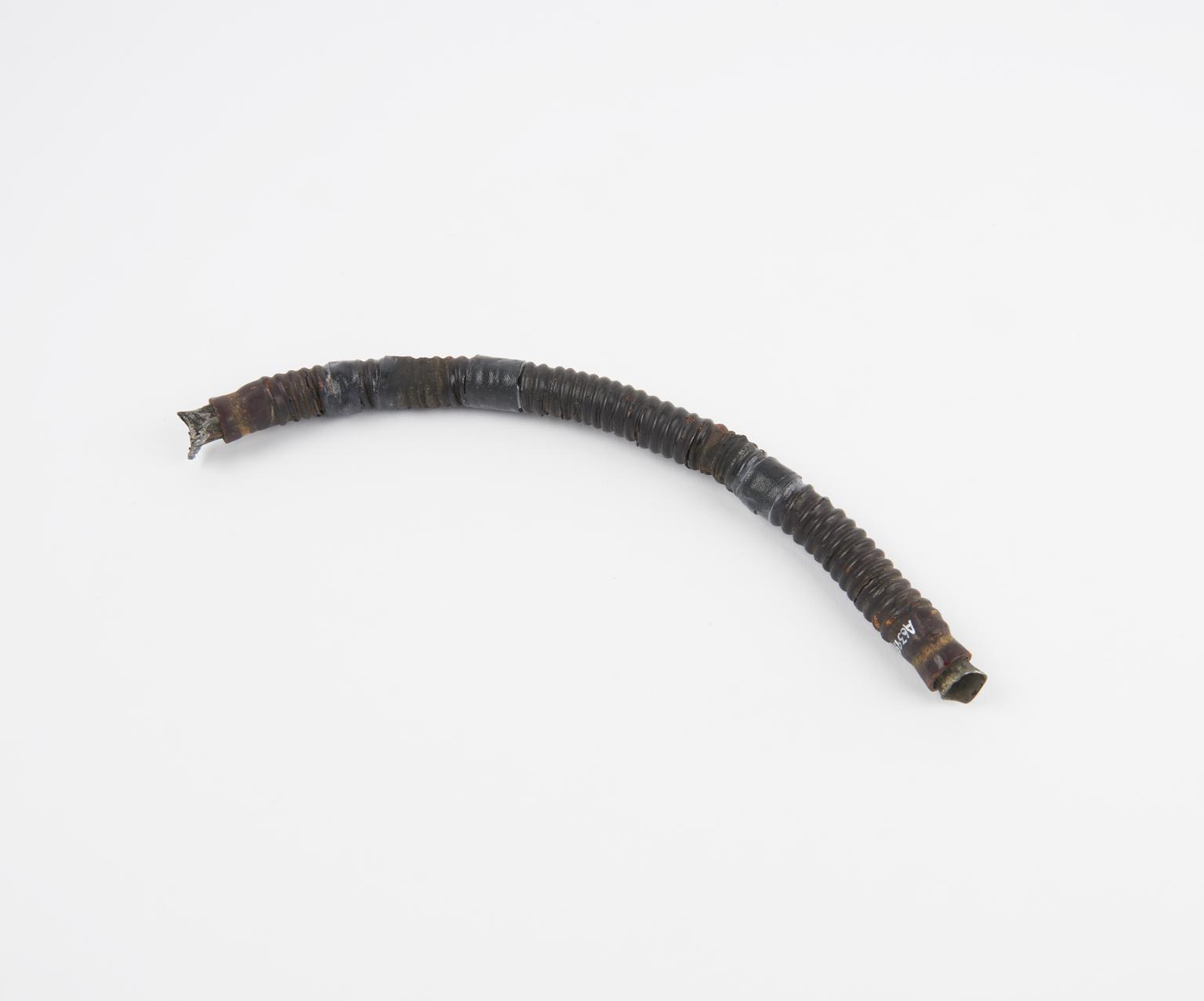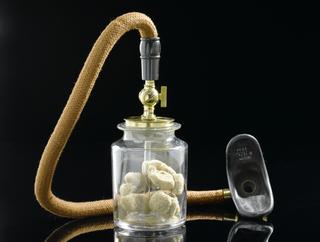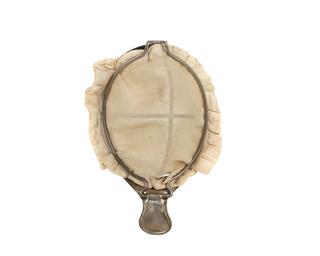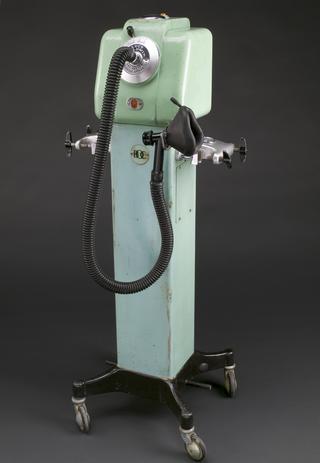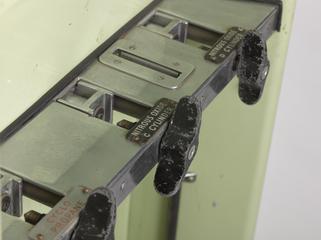Anaesthetic apparatus for inhaling gases, invented by Clover, iron box with two canisters, tubing and air valve, Mayer and Meltzer maker, Barth, maker of nitrous oxide canister, English, 1880-1910
Inhaling anaesthetics was the preferred way of numbing a patient before painful surgical operations. Joseph Thomas Clover (1825-82) used both nitrous oxide and ether to anaesthetise his patients. He used nitrous oxide first as it was a more pleasant experience for the patient and then prolonged the anaesthetic with ether. The patient inhaled the vapours through the face mask. Clover claimed that his apparatus, invented between 1874 and 1876, quickly anaesthetised patients, was good value for money, and could control the dosage of anaesthetic easily.

